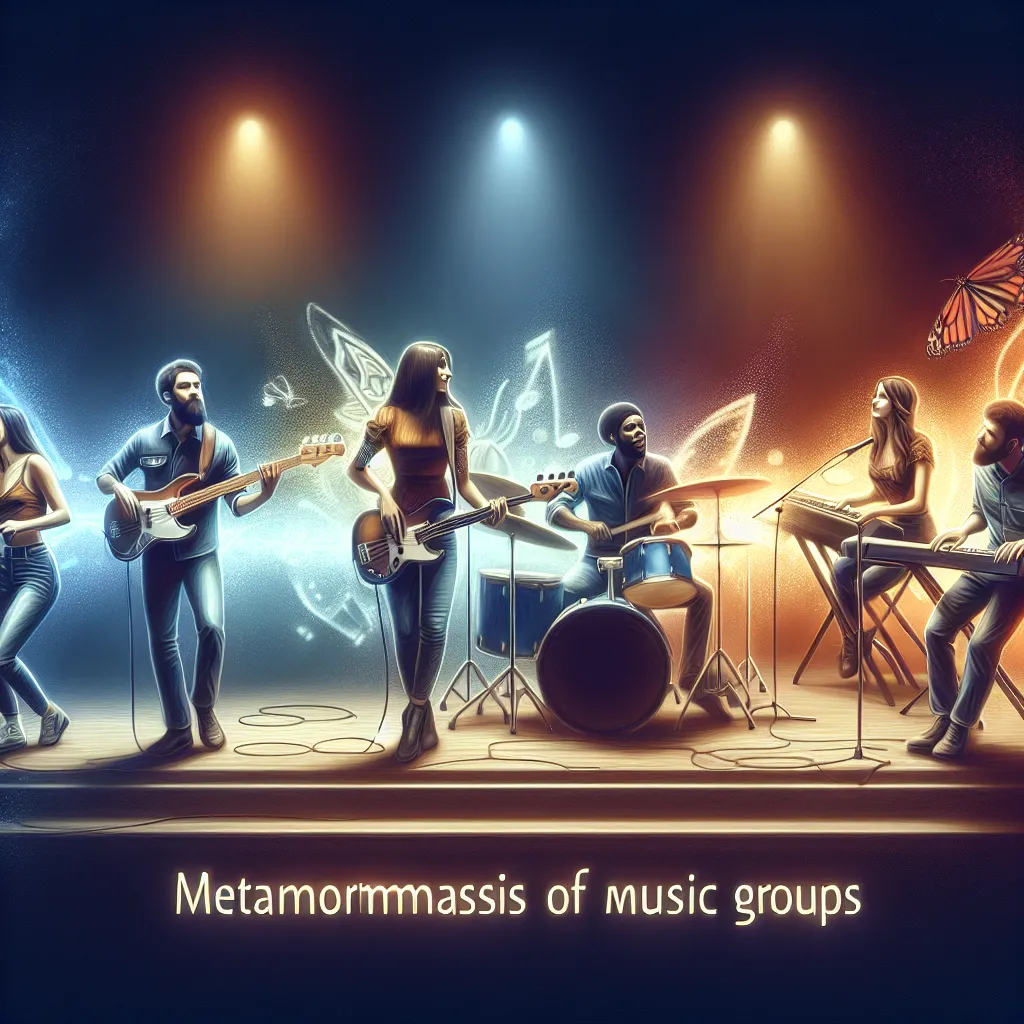
Exploring the Evolution of Bands in Modern Music
The Roots of Modern Band Dynamics
When exploring the evolution of bands in modern music, it is essential to delve into the roots of modern band dynamics. The concept of a band as we understand it today has undergone significant transformation over the years, with diverse influences shaping its current form. Historically, bands were often centered around a lead vocalist and accompanying instrumentalists, drawing from a range of musical genres such as jazz, blues, and rock. However, as the music landscape evolved, so did the dynamics within bands.
One crucial aspect of the evolution of bands is the shift from traditional hierarchies to more collaborative and democratic structures. In the past, bands were frequently led by a dominant front person with the remaining members serving as backing support. Today, many bands embrace a more egalitarian approach, where each member contributes creatively and influences the overall sound.
Additionally, technological advancements have significantly impacted modern band dynamics. The advent of recording software, digital instruments, and online connectivity has revolutionized how bands create, perform, and distribute their music. This shift has allowed for greater experimentation, collaboration across geographical boundaries, and the incorporation of electronic elements into traditional band setups.
Furthermore, the increased emphasis on diversity and inclusivity has influenced the composition of modern bands. Contemporary bands often reflect a rich tapestry of cultural backgrounds, genders, and musical influences, leading to a more eclectic and boundary-pushing sound.
In conclusion, the evolution of bands in modern music has been shaped by shifting dynamics towards collaboration, the impact of technology, and a focus on diversity. Understanding the roots of these changes provides valuable insight into the multifaceted nature of contemporary band dynamics.
The Impact of Technology on Band Evolution
Exploring the Evolution of Bands in Modern Music, we cannot overlook the profound impact of technology on shaping the trajectory of bands and their music. With the advent of digital audio workstations, bands now have unprecedented access to recording, editing, and producing their music. This has led to a significant shift in the dynamics of band collaboration and music creation.
Furthermore, technology has revolutionized the way bands connect with their audiences. Social media platforms, streaming services, and digital marketing tools have empowered bands to reach global audiences with ease, leading to a more democratized music industry. Bands can now directly engage with their fans, bypassing traditional gatekeepers and building a dedicated following.
Additionally, the evolution of technology has redefined the live music experience. From elaborate stage productions to innovative lighting and sound technologies, bands now have the ability to deliver immersive and visually stunning performances that were previously unimaginable.
In conclusion, the impact of technology on the evolution of bands in modern music cannot be overstated. It has fundamentally altered the way bands create, distribute, and perform music, ushering in a new era of possibilities and pushing the boundaries of artistic expression.
The Evolution of Band Dynamics in Popular Genres
The evolution of band dynamics in popular music genres has been a fascinating journey, reflecting the ever-changing landscape of modern music. From the early days of rock ‘n’ roll to the diverse genres of today, the dynamics within bands have played a crucial role in shaping the sound and direction of music. In the early years, bands often revolved around a central figure, such as a lead singer or guitarist, with other members playing supporting roles. However, as music genres diversified, so did the dynamics within bands.
In the world of rock and metal, the classic lineup of vocalist, guitarist, bassist, and drummer has been a staple. However, bands within these genres have experimented with different dynamics, such as dual vocalists, multiple guitarists, or incorporating electronic elements. This evolution has led to the creation of sub-genres and innovative sounds that have redefined the boundaries of rock and metal music.
On the other hand, in genres like pop and R&B, the emphasis on solo artists has often overshadowed the dynamics within bands. But with the resurgence of live instrumentation and the popularity of indie bands, the dynamics within these genres have also experienced a revival. Bands in pop and R&B now often incorporate a wide range of instruments and vocal harmonies, adding depth and complexity to their music.
Furthermore, in the realm of electronic and dance music, the concept of bands has evolved to include live electronic acts, where members manipulate sound in real time, blurring the lines between traditional band dynamics and electronic music production. These advancements have led to immersive live performances and a reimagining of how bands interact with their audience.
In conclusion, the evolution of band dynamics in popular music genres is a testament to the ever-changing nature of music. As genres continue to blend and new styles emerge, the dynamics within bands will undoubtedly continue to adapt and innovate, shaping the future of modern music.
Collaborative Creativity: The Future of Band Evolution
As modern music continues to evolve, so does the dynamic of bands and their creative processes. One significant aspect shaping the future of band evolution is collaborative creativity. In the digital age, musicians are increasingly exploring new ways to collaborate, regardless of geographical barriers, through innovative technologies and platforms. This trend opens up a world of possibilities for bands to encompass diverse influences and talents, ultimately redefining their sound and creative direction.
Collaborative creativity not only facilitates the exchange of ideas among band members, but also enables them to connect with other artists around the globe. This interconnectedness fosters a melting pot of musical styles and cultural elements, leading to the emergence of fresh, eclectic sounds. Moreover, the ability to collaborate with artists from different backgrounds allows bands to break free from traditional genre limitations, leading to the creation of truly unique and boundary-pushing music.
Furthermore, the advent of social media and online collaboration platforms provides bands with unprecedented opportunities to engage with their audience throughout the creative process. Fans can now witness the evolution of a song from its initial concept to the final production, fostering a sense of involvement and connection. This transparency not only enriches the fan experience but also offers bands valuable feedback and insights, ultimately influencing their creative direction.
In conclusion, collaborative creativity stands as a cornerstone of the future of band evolution in modern music. By embracing this approach, bands can harness a wealth of diverse influences, connect with artists worldwide, and engage with their audience in new and exciting ways. As technology continues to advance, the potential for collaborative creativity to shape the landscape of music will only continue to expand, offering endless possibilities for the evolution of bands in the digital era.



